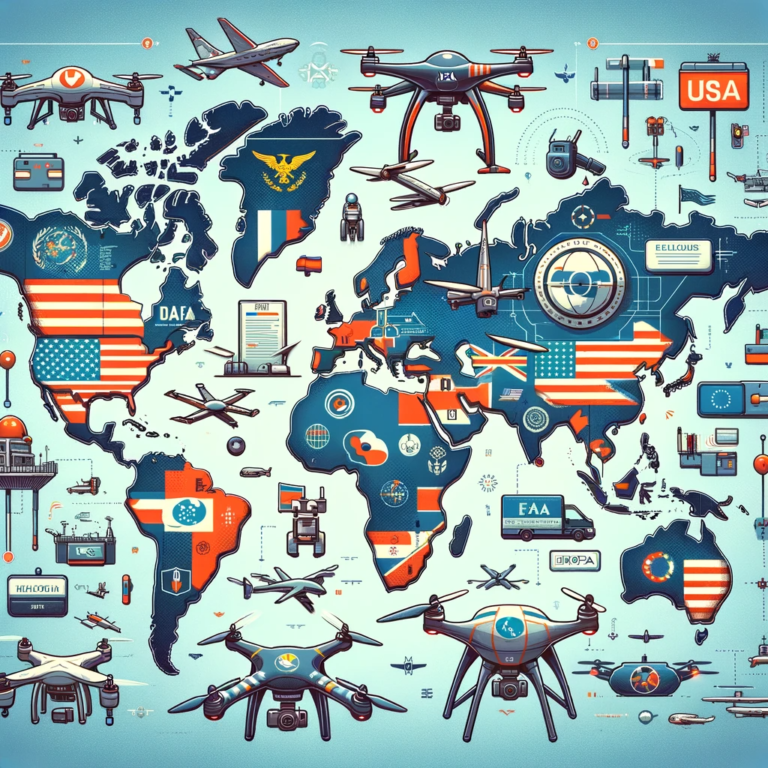
Have you ever wondered how drone laws differ from one country to another? It’s fascinating to discover the various regulations and restrictions that exist when it comes to operating drones in different parts of the world. From strict limitations on flying altitude and restricted areas to permits and registration requirements, each country has its own unique approach to managing the use of drones. In this article, we will explore the diverse range of drone laws and provide you with a comprehensive understanding of how they vary across different countries. So, grab your virtual passport, and let’s take off on this exciting journey to explore the world of drone regulations!
How Do Drone Laws Vary by Country?
Introduction
Hello there! If you’re interested in drones and thinking about buying one, it’s important to understand that drone laws vary from country to country. As exciting as it is to fly a drone, it’s crucial to operate within the legal framework set by your country. In this article, we will explore how drone laws differ across various countries. So, buckle up and let’s take a flight through the world of drone regulations!
The United States
If you’re residing in the United States, the Federal Aviation Administration (FAA) is the regulatory body responsible for overseeing drone operations. The FAA classifies drones into different categories based on their weight and purpose. For recreational drone usage, you are required to register your drone with the FAA if it weighs over 0.55 pounds (250 grams). Commercial drone operators, on the other hand, need to obtain a Part 107 license.
When flying a drone in the United States, there are specific rules you should keep in mind. First, you must always keep your drone within your line of sight. Second, you should avoid flying near airports, military bases, and other sensitive areas. Additionally, you cannot fly your drone over people or at night without special permission. Familiarizing yourself with these regulations will ensure safe and legal drone operations.
Canada
If you’re located in Canada, Transport Canada is the governing body responsible for drone regulations. Like the United States, drones are classified based on their weight and purpose. However, regardless of the drone’s weight, you need to register it with Transport Canada before operating it.
In terms of rules, recreational drone operators in Canada must keep their drones below an altitude of 400 feet and a distance of 100 feet from people, vehicles, and buildings, unless authorized. Additionally, you should avoid flying near airports and emergency response sites. Commercial drone operators need to obtain a Special Flight Operations Certificate (SFOC) for most drone operations. Remember to always check the latest regulations to ensure compliance.
The United Kingdom
If you’re a drone enthusiast in the United Kingdom, you’ll find that the regulations are quite comprehensive. The Civil Aviation Authority (CAA) governs drone operations in the UK. Similar to other countries, the classification of drones is based on weight and purpose. However, in the UK, all drones weighing 250 grams or more need to be registered.
When flying a drone in the UK, there are certain rules you must follow. You should always keep your drone within your visual line of sight, avoid flying near airports and air traffic, and stay at least 50 meters away from people and properties not under your control. Additionally, drones weighing 250 grams or more must pass an online theory test and obtain an “Operator ID” for legal operation.
Australia
Ah, Down Under! Australia has its own set of drone regulations overseen by the Civil Aviation Safety Authority (CASA). If you’re piloting a drone weighing more than 250 grams, you need to register with CASA. For commercial drone operations or those weighing above 2 kilograms, you’ll need to obtain a Remote Pilot License (RePL) and an Operations Manual.
When it comes to flying a drone in Australia, there are a few key rules to keep in mind. You must always keep your drone within your line of sight and fly at or below 120 meters (400 feet). Avoid flying near airports, helicopters, or populous areas. Furthermore, it’s important to respect the privacy of others and not record or photograph them without their consent.
Other Countries
Of course, the drone regulations we’ve discussed are just a taste of the wide array of rules around the world. Countries such as Germany, France, Japan, and many more have their own unique set of regulations. Some countries require mandatory drone insurance, while others limit the use of drones in certain areas.
If you plan on flying a drone in a country other than your own, make sure to research and understand the specific regulations in place. This will prevent any unwanted legal issues and ensure a smooth and enjoyable drone experience.
Conclusion
Congratulations! You now have a better understanding of how drone laws vary from country to country. It is crucial to be aware of these regulations and operate your drone safely and legally. Remember to always research and follow the guidelines set by the respective regulatory bodies in your country, whether it’s the FAA in the United States, Transport Canada, the CAA in the United Kingdom, or CASA in Australia. Happy flying and enjoy the incredible world of drones!